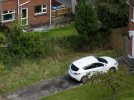With fast moving subjects, 2 seconds between frames is forever, where modern cameras can now shoot 60 full resolution still frames per second, and the Mavic 3 shows no delay between JPG images. Obviously, it depends upon your subject and your intended use of the images. However, if you get the exposure right on the take, or bracket, you won't need to push or pull too much in a composited image from bracketed shots. To be clear, I am not arguing against DNG, but at least take a JPG simultaneously so you get the DJI secret sauce included to match in your 10 bit DNG, if the slow DNG shooting rate is acceptable. The JPG can also quickly tell your which DNG's are worth converting.Some of your claims or expressions are perplexing. Like shooting 3 bracketed JPEGs is much faster than taking one DNG because it takes for ever to write it card. Realy?? I must be using different card from you because it takes maybe 2 sec before my M3 is ready to shoot another DNG. Maybe that's in your language for ever?
As for the amazing DJI JPEGs, the are still only 8bit deep files with much smaller DR then DNG. Any OOC JPEG if well exposed and with accurate WB can look pretty darn good. But as soon as you start pushing and pulling the shadows and highlights you start to see posterization in blue sky pretty quickly and they fall appart pretty quickly. Bracketing is definitely an option for creating a composite image but moving elements can cause issues when doing that.
All in all I personally have not found any drawbacks from shooting DNG only. But each to his own. Shooting both is perhaps not such a bad idea. Some might even addopt it after being convinced and converted by your posts.
With the 360 panos, the previous 12 MP JPG stitch on the M2P served that purpose, while saving the original 20MP files for PTGui stitching at much higher resolution. However, on the Mavic 3, the HiRes 70MB JPG stitch is so good that I rarely need to stitch anything manually. Just need to convert them for web use.











